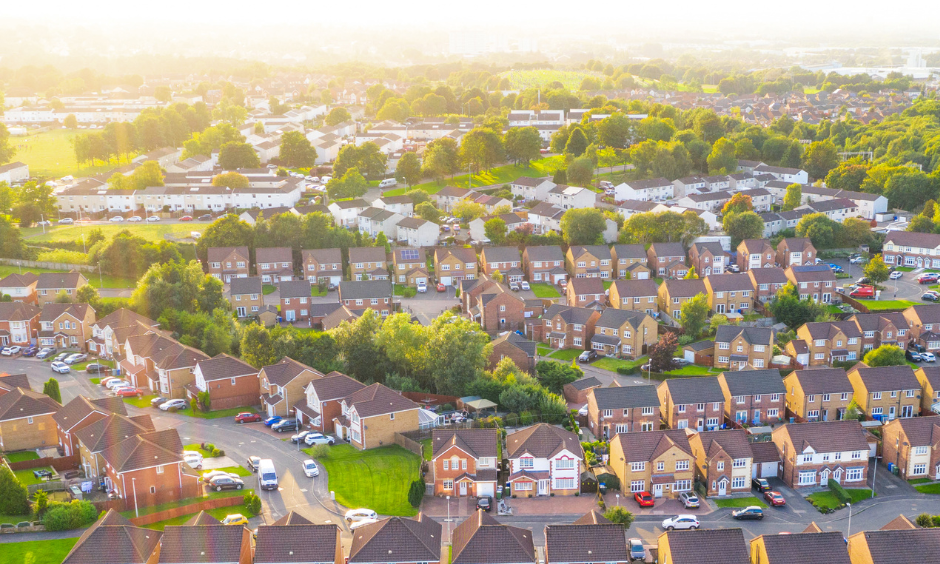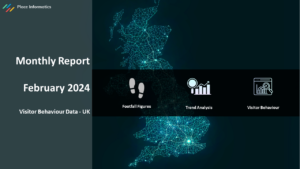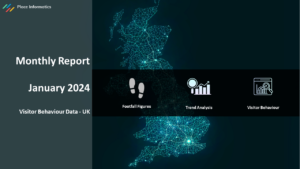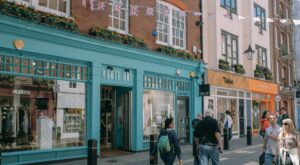In recent years, urban planners and policymakers have been increasingly drawn to the concept of 20-minute neighbourhoods – compact, self-sustaining communities designed to provide residents with easy access to essential services and amenities, such as schools, healthcare, grocery stores, parks, and recreational areas, within a 20-minute walk from their homes.
To unlock the full potential of a walkable neighbourhood, footfall data is a valuable tool for guiding urban development strategies, ensuring they align with the diverse needs of citizens and foster the creation of vibrant, people-centric communities. By harnessing visitor insights, towns and cities can design and implement initiatives that prioritise accessibility and convenience for residents, thus enriching the overall living experience for residents.
The Benefits of 20-Minute Neighbourhoods
20-minute neighbourhoods bring an array of compelling advantages that extend far beyond mere convenience. Here are some of the main benefits:
Better Public Health Outcomes: With easier access to amenities, 20-minute neighbourhoods promote physical wellness through active transportation like walking or cycling, leading to healthier lifestyles and reduced rates of stress, obesity and chronic diseases.
Reduced Traffic Congestion: By minimising the need for long commutes, 20-minute neighbourhoods alleviate traffic congestion by encouraging people to walk and cycle for local trips rather than driving, creating the need for better walking and cycle routes and ultimately improving air quality by reducing traffic pollution.
Environmental Sustainability: It is estimated that cities account for over 70% of global CO2 emissions with motorised transport standing as a major contributor. Fewer car trips reduces the strain on non-renewable resources, infrastructure costs, and lowers vehicle emissions.
Community Cohesion: Shared public spaces created by 20-minute neighbourhoods can encourage social gatherings, fostering a sense of belonging, social interactions, and a strong support network among residents, local businesses and service providers.
Boost Local Economy: The close proximity of services and amenities encourages local entrepreneurship and small businesses, thus boosting the growth of the local economy with a greater chance of attracting investments and generating job opportunities in bustling areas.
How Footfall Data Can Lead to Improved Urban and Spatial Planning
- Understanding Pedestrian Movement Patterns
Footfall data provides valuable insights into pedestrian movement patterns, helping urban planners identify high and low foot traffic areas using interactive 3D maps that show visitors’ pathways. This knowledge enables urban planners to see how pedestrians use a space and helps them to plan changes to infrastructure and public spaces.
- Visitor Origination Insights
By analysing postcodes and socio-demographic data of visitors from the local area, wider regional district, and from further afield around the UK, local councils and urban developers can tailor marketing campaigns, facilities, accommodation and activities to attract specific demographic groups, maximising the appeal of local businesses and tourist attractions.
- Supporting Investment and Carbon Reduction Initiatives
Accurate footfall data can be instrumental in securing funding for urban development projects related to the 20-minute neighbourhood concept. This information can demonstrate popular routes and underutilised paths to stakeholders and investors, encouraging well placed infrastructure improvements, leading to better connectivity for residents and lower carbon emissions.
- Improving Visitor Experience and Loyalty
Furthermore, footfall data can assist urban planners and policymakers in identifying gaps in store types or services within their local community. This enables targeted efforts to attract new commercial traders and reduces the need for potential customers to travel to neighbouring towns, fostering customer loyalty and repeat visits.
To summarise, footfall data-driven strategies pave the way for a more connected, efficient, and liveable urban landscape, where residents can enjoy the benefits of a well-designed, walkable community right at their doorstep.
Get in Touch
Ready to revolutionise urban development and embrace the potential of 20-minute neighbourhoods? Place Informatics is here to guide you!
Experience the impact of our town centre footfall and visitor behaviour data firsthand by calling 0161 706 1343 or email us at info@placeinformatics.com for a discussion about your location and your data needs. Let’s collaborate to build a better and brighter future for your community.






